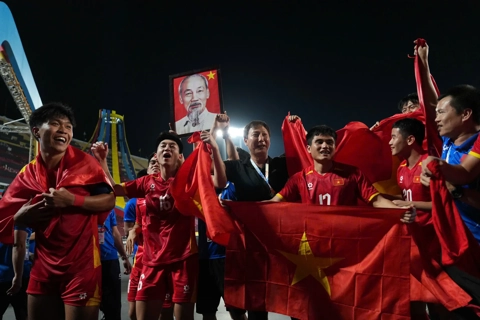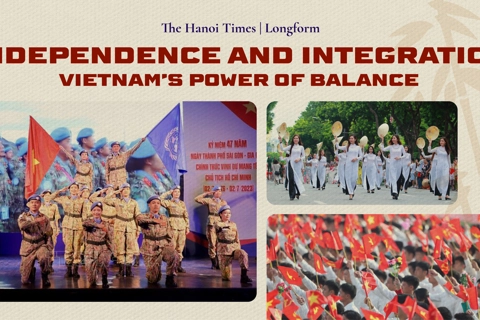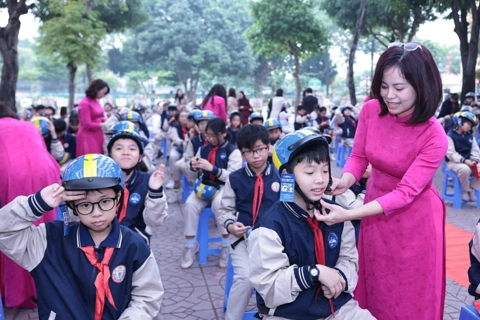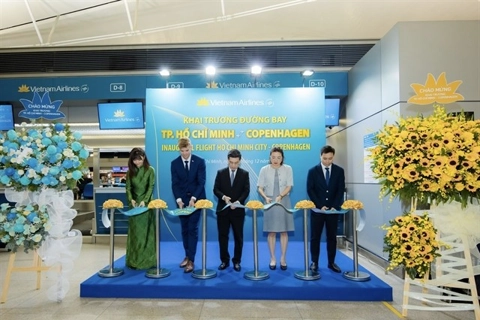Vietnam
A look back at Vietnam war against Chinese invasion after 40 years
Feb 18, 2019 / 05:27 PM
The number of the invading Chinese army was more than the figure of American troops at its peak during the Vietnam War (550,000) and the number of the French expeditionary force in the first Indochina war (250,000).
It’s been 40 years since China launched a military attack on Vietnam, killing dozens of thousand of Vietnamese soldiers and 10,000 civilians, devastating six provinces, and leaving 3.5 million people homeless.
On February 17, 1979, China launched the war against Vietnam, mobilizing more than 600,000 soldiers, 550 tanks of Type 62, Type 59, and Type 63; 480 cannons; more than 1,200 mortars of 76.2 mm, 152 mm, and 160 mm; rocket launchers of 107 mm to 130 mm; 200 warships, 706 interceptors J-5, J-6, J-7; 120 ground-attack aircrafts J-6 and Q-5; and 122 jet bombers H-5 and H-6.
Vietnamese force totaled about 60,000, mostly militia, equal tenth of the Chinese troop.
Despite being rarely mentioned in the history, media, and textbooks, the war is truly "an invasion" in words of historians, scholars, participants, and witnesses.
Reasons
Major General Nguyen Hong Quan, former vice head of Institute for Defense Strategy (IDS) under the Vietnamese Ministry of Defense, said that China took the offensive against Vietnam as a test to the Vietnam-Soviet Union relations.
On January 29, 1979, China’s Deputy Prime Minister Deng Xiaoping met US President Jimmy Carter and together they signed new accords, part of which was believed to have a common agreement on Vietnam. Among them, Beijing would attack Hanoi.
The offensive in words of Deng Xiaoping aimed to “teach Vietnam a lesson” as Vietnam sent troops to Cambodia to fight against China-backed Khmer Rouge, and Vietnam allied itself with the Soviet Union, which China considered a rival.
Damage
China lost 62,500 soldiers in the war, 550 tanks and 115 cannons damaged – an expensive military lesson in return. The Vietnamese side has never announced official statistics of its losses.
China failed to penetrate further into Vietnamese land, only seizing several areas near the border.
Vietnamese soldiers who took part in the war said that the military conflict was short-lived but bloody.
The battle lasting 30 days ravaged 1,200 kilometers along the borderline, affecting six provinces namely Cao Bang, Ha Giang, Lai Chau, Lao Cai, Lang Son, and Quang Ninh. But China repeatedly launched attacks to Vietnam’s borders during a decade later. It only ended the offensive in 1989 when Vietnam withdrew troops from Cambodia.
Almost forgotten war
Vietnamese textbooks mention little about the war and hardly call it an “invasion”. Meanwhile, no official commemoration of the war has been held in Vietnam over the past years.
Each year, on the anniversary of the war, few news websites cover the war with some witnesses reminding of the battle or quote some soldiers remembering their teammates lost in the war.
VnExpress – one of the most-read Vietnamese newswires – is among few newswires posting a series of articles about the war every anniversary.
However, a series of media outlets have openly published stories on the bloody war this year, which marked the 40 anniversary of the start of the conflict.
Firmer remarks are normally from historians and scholars who demand a significant position of the war in history books.
Prof. Pham Hong Tung from Hanoi National University, Prof. Vu Duong Ninh, and Prof. Pham Quang Tuan, head of Vietnam Academy of Social Sciences, said that the war, to any extent, is truly an invasion of more than 600,000 Chinese soldiers into the neighboring country. For such a reason, it is a war, to call it properly.
Veteran Luong Van Huong told VnExpress that they were never scared when fighting against the enemy but fear that the history might be forgotten.
Former Lieut. General Nguyen Quoc Thuoc said that the Chinese people should know that some of their leaders themselves launched a military offensive against Vietnam in February 1979.
It’s China who caused two wars attacking Vietnam from the southwest in hands of Pol Pot-led Khmer Rouge in 1978 and the invasion in the north in 1979.
Former Vice State President Nguyen Thi Binh said that the war must be retold to remind the youth of unpeaceful borders. Reminding the war against Chinese offense is not a way to ignite hatred but to educate Vietnamese youth.
Vietnam and China normalized the bilateral ties in 1991, since then, the giant neighboring country continued border spats and sea disputes with Vietnam. In terms of economics, Beijing runs large trade surpluses with Hanoi in recent years.

Photo: Internet
|
Vietnamese force totaled about 60,000, mostly militia, equal tenth of the Chinese troop.
Despite being rarely mentioned in the history, media, and textbooks, the war is truly "an invasion" in words of historians, scholars, participants, and witnesses.

Chinese troops crossed a river to attack Vietnam in 1979. File photo
|
Major General Nguyen Hong Quan, former vice head of Institute for Defense Strategy (IDS) under the Vietnamese Ministry of Defense, said that China took the offensive against Vietnam as a test to the Vietnam-Soviet Union relations.

Chinese Deputy PM Deng Xiaoping and US President Jimmy Carter in the US in 1979. Photo: UPI
|
The offensive in words of Deng Xiaoping aimed to “teach Vietnam a lesson” as Vietnam sent troops to Cambodia to fight against China-backed Khmer Rouge, and Vietnam allied itself with the Soviet Union, which China considered a rival.
Damage
China lost 62,500 soldiers in the war, 550 tanks and 115 cannons damaged – an expensive military lesson in return. The Vietnamese side has never announced official statistics of its losses.
China failed to penetrate further into Vietnamese land, only seizing several areas near the border.
Vietnamese soldiers who took part in the war said that the military conflict was short-lived but bloody.

A town in northern Vietnam was devastated in the war. Photo: VNS
|
Almost forgotten war
Vietnamese textbooks mention little about the war and hardly call it an “invasion”. Meanwhile, no official commemoration of the war has been held in Vietnam over the past years.
Each year, on the anniversary of the war, few news websites cover the war with some witnesses reminding of the battle or quote some soldiers remembering their teammates lost in the war.
VnExpress – one of the most-read Vietnamese newswires – is among few newswires posting a series of articles about the war every anniversary.
However, a series of media outlets have openly published stories on the bloody war this year, which marked the 40 anniversary of the start of the conflict.
Firmer remarks are normally from historians and scholars who demand a significant position of the war in history books.
Prof. Pham Hong Tung from Hanoi National University, Prof. Vu Duong Ninh, and Prof. Pham Quang Tuan, head of Vietnam Academy of Social Sciences, said that the war, to any extent, is truly an invasion of more than 600,000 Chinese soldiers into the neighboring country. For such a reason, it is a war, to call it properly.
Veteran Luong Van Huong told VnExpress that they were never scared when fighting against the enemy but fear that the history might be forgotten.
Former Lieut. General Nguyen Quoc Thuoc said that the Chinese people should know that some of their leaders themselves launched a military offensive against Vietnam in February 1979.
It’s China who caused two wars attacking Vietnam from the southwest in hands of Pol Pot-led Khmer Rouge in 1978 and the invasion in the north in 1979.
Former Vice State President Nguyen Thi Binh said that the war must be retold to remind the youth of unpeaceful borders. Reminding the war against Chinese offense is not a way to ignite hatred but to educate Vietnamese youth.
Vietnam and China normalized the bilateral ties in 1991, since then, the giant neighboring country continued border spats and sea disputes with Vietnam. In terms of economics, Beijing runs large trade surpluses with Hanoi in recent years.








